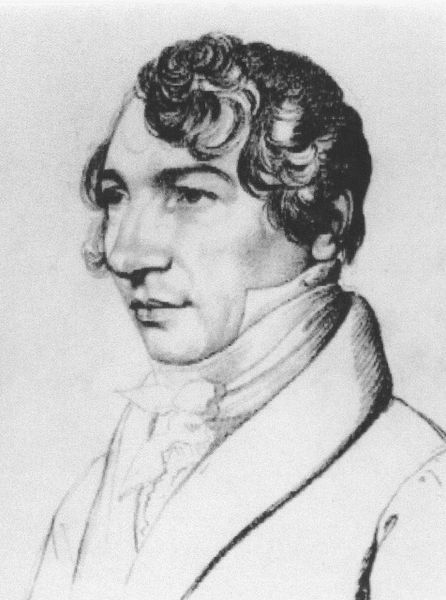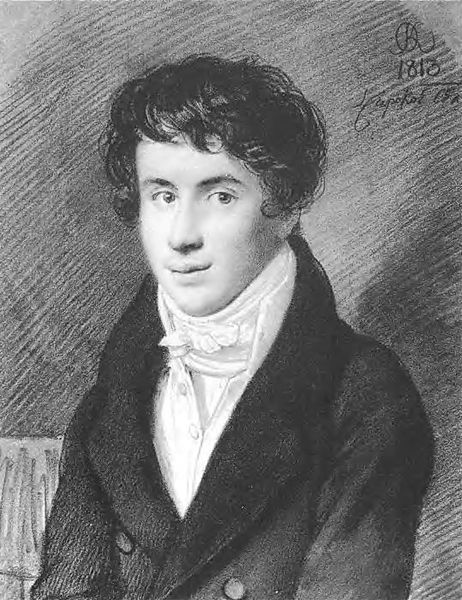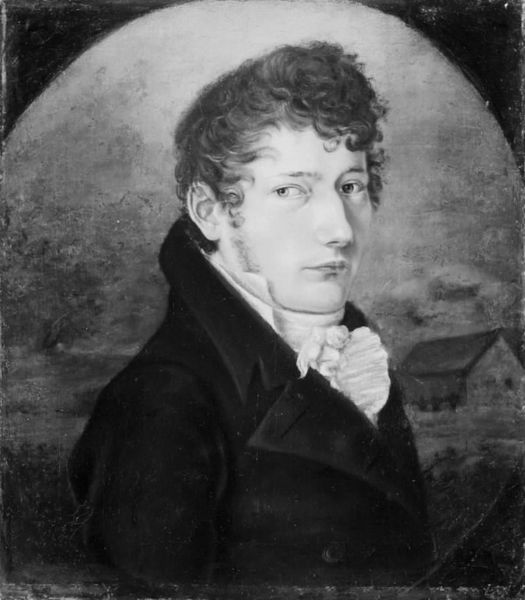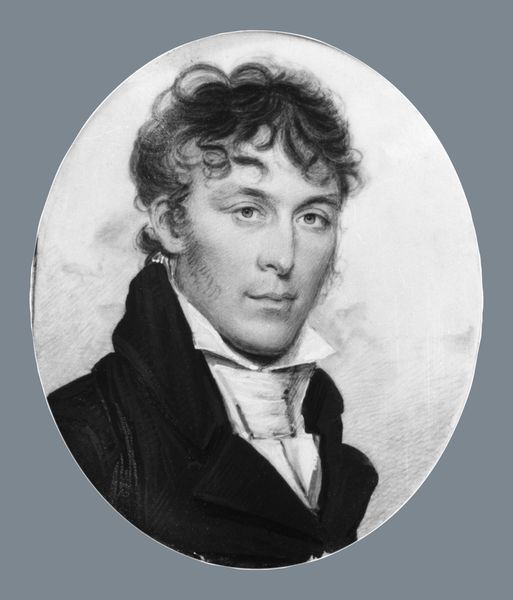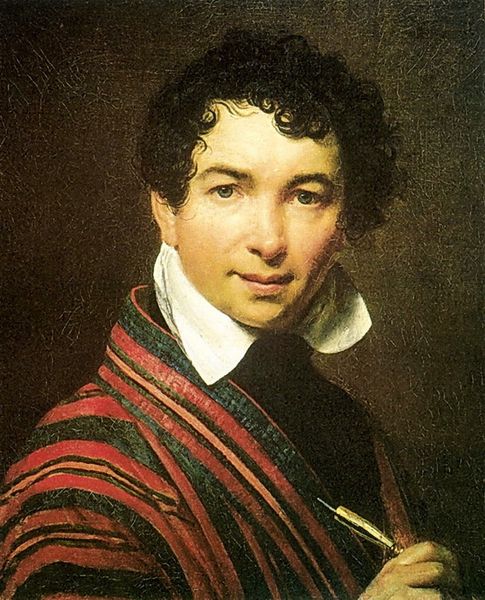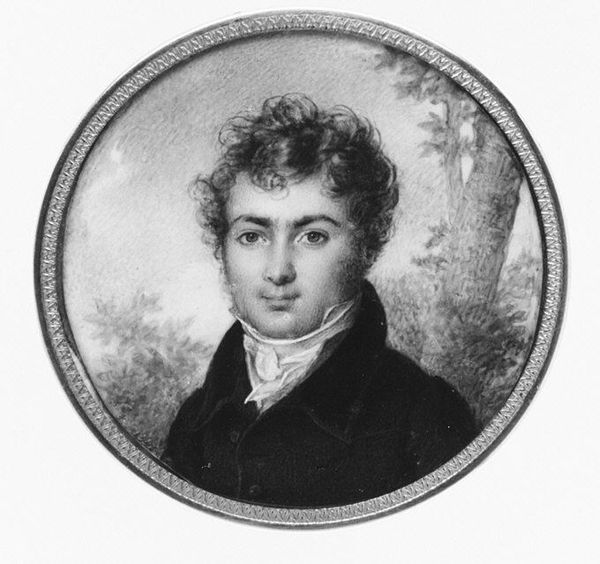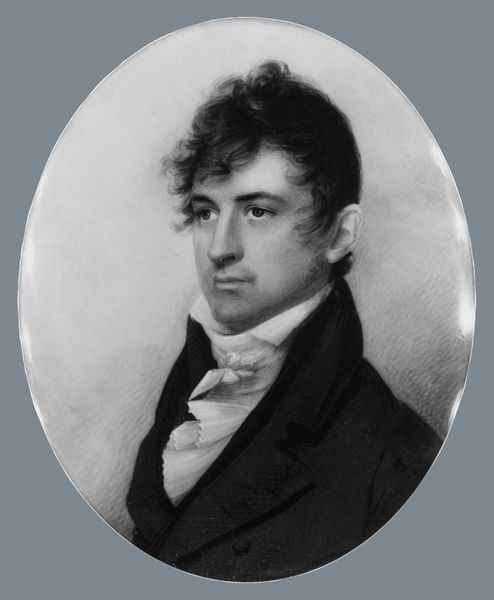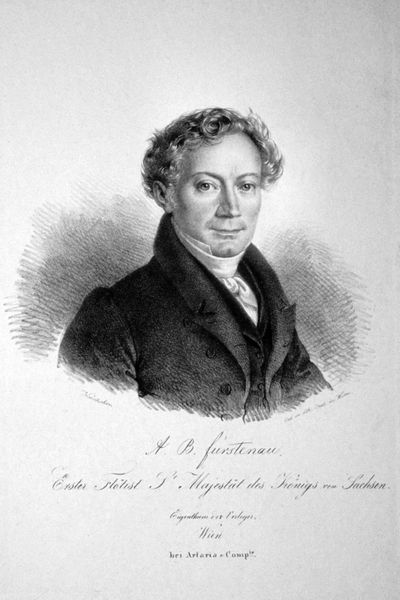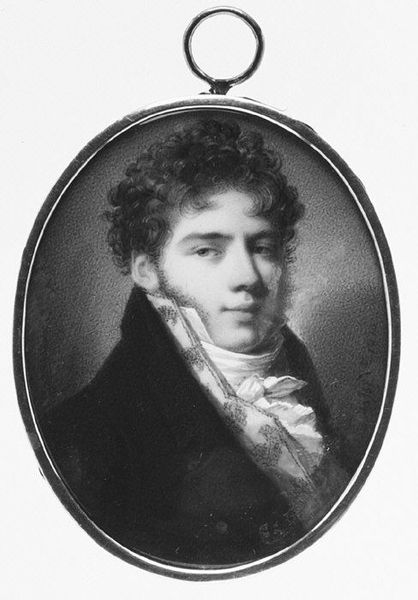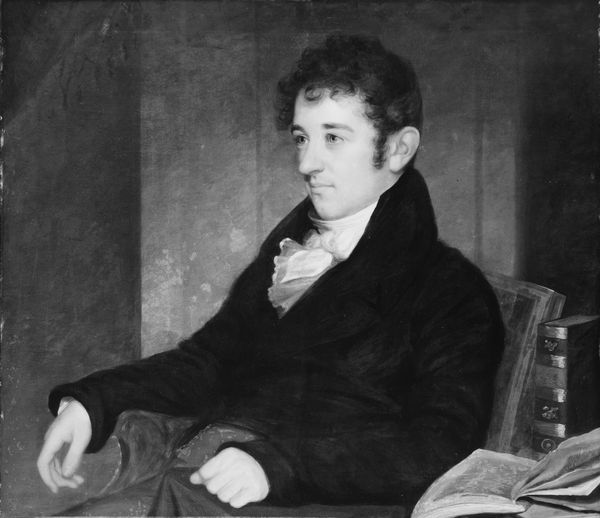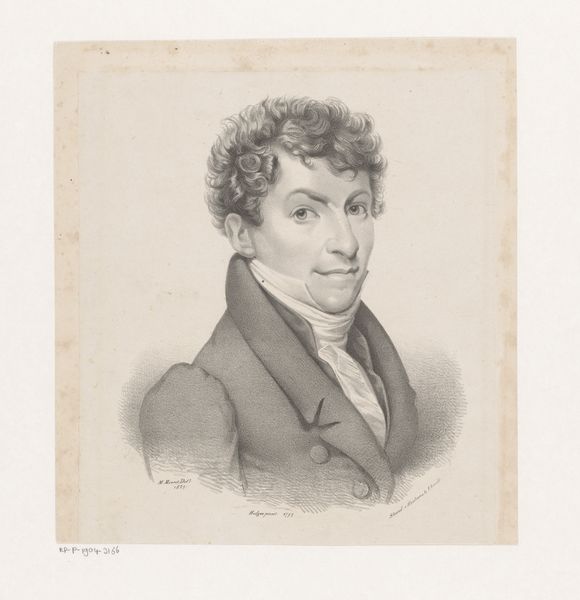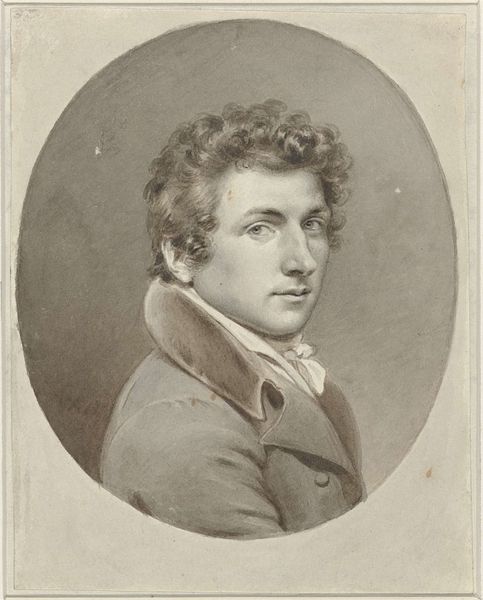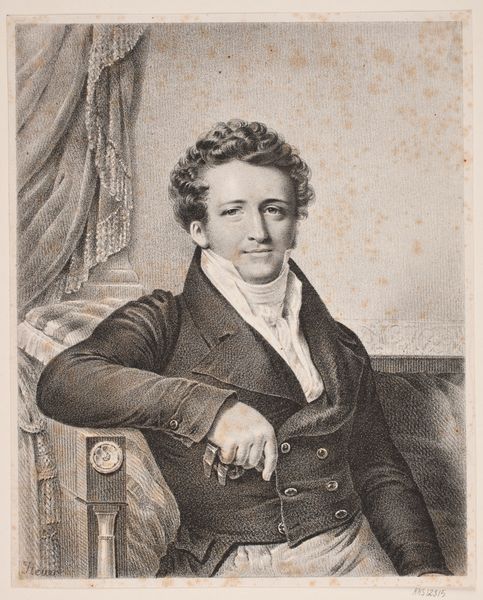
drawing, pencil, graphite
#
portrait
#
drawing
#
self-portrait
#
figuration
#
male portrait
#
romanticism
#
pencil
#
line
#
graphite
#
portrait drawing
#
realism
Dimensions: 18.8 x 11 cm
Copyright: Public domain
Editor: Here we have Orest Kiprensky's self-portrait, rendered in graphite around 1828. I’m struck by the intense gaze and almost playful curls, contrasting with the somber vest. How would you interpret this work within its historical context? Curator: Given its creation during the Romantic era, we must consider the rising cult of the artist and the increasing emphasis on individual genius and expression. Kiprensky presents himself not just as a craftsman but as a sensitive, intellectual figure. Note the slightly disheveled appearance— a conscious rejection of rigid academic formality. How do you think this image contributed to the construction of the artist's public persona? Editor: It almost feels like he’s inviting the viewer into his inner world, suggesting an intimate connection between the artist and the audience. It challenges the traditional idea of an artist as a distant, untouchable figure. Curator: Precisely. The Romantics redefined art’s purpose: it was no longer simply about representing the world, but about conveying emotions and challenging social norms. Portraits, and self-portraits specifically, became vehicles for promoting the artist’s personal vision and solidifying their cultural influence. Kiprensky positions himself as part of this movement. Editor: So it's less about realistic depiction and more about projecting an image, constructing a role within society. Fascinating. Curator: Exactly. Looking at art through that lens can be revealing. Editor: I will definitely remember that next time! Thank you!
Comments
No comments
Be the first to comment and join the conversation on the ultimate creative platform.
